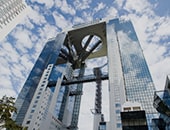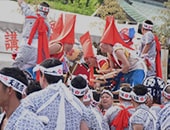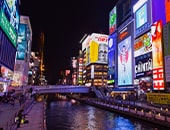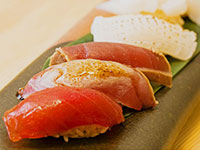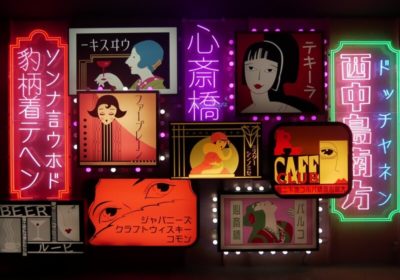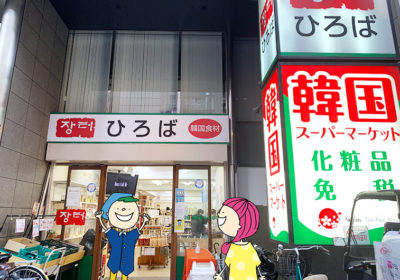

Osaka Bob FAMILY
Makudo? Yuniba? There’s So Much to Learn About Kansai Dialect
Maido! Manabu here!
Osaka has a lot of unique words in the local dialect. And I got a lot of positive feedback from the last article I wrote introducing some of the Osaka dialect.
I am from Osaka through and through so none of these words or phrases seem out of the ordinary to me. But whenever I talk to people from other parts of the country, they always say, “Oh, you must be from Osaka!” or “What did you just say?”
The Kansai dialect is so fun to use, so I want to share 7 more words and phrases with you. See how much you already know and learn some new words so you’ll be talking like a local.
[Contents]
- 1.How do you say “Department Store”?
- 2.What’s so different about pushpins? Is it the shape? Or is it regional?
- 3.Makku vs. Makudo—Where to get your hamburgers
- 4.Yuniba? Or USJ?—The jury is split on what to call Kansai’s biggest theme park
- 5.Meat-filled steamed buns—You say nikuman. I say butaman.
- 6.Imagawayaki or kaitenyaki? There are so many names for this one sweet treat
- 7.Would you order sashimi or otsukuri? Regional difference based on culture
1.How do you say “Department Store”?
Ok, starting with question number one!

This is a photo of Hanshin Department Store in Umeda, located just south of JR Osaka Station. It’s famous for having an amazing selection of foods and ingredients, enough to impress the residents of this foodie city—Osaka.
So, what would you call a building like this in Japanese?
In standard Japanese they are often called depāto, but here in Kansai we call them hyakkaten
We have quite a few of them in Kansai—Hankyu Department Store, Hanshin Department Store, Daimaru Department Store.
2.What’s so different about pushpins? Is it the shape? Or is it regional?
And on to question number two!
Those little things we use to put up posters or stick things to bulletin boards—are they called gabyо̄ or oshipin???

Well, so in standard Japanese these shiny pins here would be called gabyо̄. And yes, when you see them in a store, they are sold as gabyо̄. And some people in Kansai will call them gabyо̄…
But what about these?

Apparently people other parts of the country will call these gabyо̄ too. I can’t believe it.
For me, a stylish looking pushpin is called just that—oshipin—which also happens to match the English term as well.
There is a strong regional preference for what to call this useful office supply, but for me, it’s mostly a matter of shape. If the thumbtack is flat on the end, I call it a gabyо̄. If it has a rounded end, I call that an oshipin. What about you? Which Japanese word do you use?
3.Makku vs. Makudo—Where to get your hamburgers
And on to question three.
What do you call this?

You may have heard this before, but in Kansai, McDonald’s is called Makudo. In other parts of Japan, it is referred to as Makku. But if you say the word “Makku” in Japanese, Kansai people will imagine a Mac computer.
Of course, nobody is silly enough to think you want to go grab a burger from your computer. And of course Kansai people know this is a regional difference so miscommunication isn’t very likely. Everyone has heard the commercials before so people here know what “Makku” means.
Oh, and I heard that in France, they also say, “Makudo.” I wonder if that’s really true…
4.Yuniba? Or USJ?—The jury is split on what to call Kansai’s biggest theme park

Always ranking either number 1 or number 2 among Osaka’s most popular attractions—Universal Studios Japan! But what do you call it for short?
Well, there are those in Osaka who call it USJ. And then there are those who shorten it to Yuniba, essentially the first three syllables of the name, but with Japanese pronunciation. And this version of the name is little known outside of Kansai, so it’s safe to say this is a unique Kansai variation of the name.
Speaking of communication mixups, a classic one is people who call USJ, UFJ and vice versa. We have a major bank called Mitsubishi UFJ Bank, which is frequently called simply UFJ—or USJ when someone conflates the two.

It’s funny to hear in conversation, but every now and then you’ll catch someone saying something like, “Last weekend my granddaughter went to UFJ. She had so much fun with her friends!”
Who goes to the bank to have a good time?!?
5.Meat-filled steamed buns—You say nikuman. I say butaman.
And now, moving onto the topic of foods… What would you call this?

A nikuman???
In Osaka, this is a butaman. In Kyoto, in Nara, even in Hyogo, everyone calls this a butaman. So for Kansai people, this is a butaman. But in the rest of the country, nikuman is the term flying around. I can hardly believe it.
Apparently there are a number of theories on why this is the case. Among those, the most reasonable sounding one is that in Kansai the word niku (meat) implies beef. And since these scrumptious steamed buns are filled with pork, not beef, they can’t be nikuman. They are called butaman, since buta means pork.
Butaman are just one variety of the delicious steamed buns that came from China and are said to have been created by the Chinese statesman, strategist, and inventor Zhuge Liang.
And people in Kansai love butaman! There is a really famous commercial for butaman from 551 that everyone here knows. And they will react with a smile and a frown too if you say the tagline “Go-go-ichi ga aru toki. Nai toki.” It literally means “When you have 551. And when you don’t.” And it’s tons of fun to see how people react to this phrase.
6.Imagawayaki or kaitenyaki? There are so many names for this one sweet treat
Here’s the next one!

What exactly is it? Well, that’s a hard question to answer. It’s sort of the Japanese sweet known by a hundred names.
I call them kaitenyaki, but I have friends that say о̄banyaki and others that claim they are imagawayaki. And yet there are even folks who call them gozasо̄rо̄. Actually the ones pictured here are definitely gozasо̄rо̄, since I bought them at a store called Gozasо̄rо̄.

There are so many variations in what to call these round filled cakes that I decided I had to look it up. And here are all the names I found:
| Imagawa-yaki | Kaiten-yaki | О̄ban-yaki | Koban-yaki | O-yaki |
| Enban-yaki | Amataro-yaki | Kintsuba | Gozasо̄rо̄ | Shibaraku |
| Azuma-yaki | Gishi-yaki | Zubora-yaki | Nanakoshi-yaki | Asakusa-yaki |
| Taiko-yaki | Taikо̄-yaki | Nijū-yaki | Ajiman | Fuku-buku Manjū |
| Tenrin-yaki | Kogane-yaki | Mikasa-yaki | Jinkо̄-eisei Manjū | Culture-yaki |
There are so many! I’ve heard some of them before, but jinkо̄-eisei manjū?!?
That means man-made satellite sweet bun! I guess it is round, but still…
I was so surprised that I looked that up too. And it turns out there is a sweets shop selling these in Kobe—which is a city near Osaka—and the shops name is jinkо̄-eisei manjū. It has been in business for over 60 years.
When I heard the name, I thought it must be affiliated with Tanegashima because of the space center there. But then again, maybe not…
It’s funny how many names there are for this sweet because it’s so similar to a dorayaki. And a dorayaki is just a dorayaki. Maybe that got its name from Doraemon… Who knows?
7.Would you order sashimi or otsukuri? Regional difference based on culture
I hope I don’t have you scratching your head.
Here is the final, quiz. What would you call a dish like this?

Probably most of you know this as sashimi.
But in Kansai, lots of people call it otsukuri.
I was curious about the origin of these terms and so I looked it up. As it turns out, a long time ago, this dish was called kirimi, literally cut flesh. And because there were many samurai in Edo (present-day Tokyo), the word kiri (cut) had a negative connotation, so the dish became known as sashimi instead.
Conversely, in the area of Osaka and Kyoto, people used an entirely different word for cutting fish—tsukuru— and this is how we got the name otsukuri.
Of course people in Kansai understand the word sashimi, but a restaurant with real Kansai pride will have otsukuri on the menu.
So after reading this, I hope you are more familiar with some of the words we use in Osaka and more broadly the rest of Kansai. There are more too—kitsune vs. tanuki and Y-shirts vs cutter shirts. But those will have to wait for next time.
▼Read more
 What’s so special about Osaka dialect? A primer on Osaka words and conversation
What’s so special about Osaka dialect? A primer on Osaka words and conversation

Osaka Bob FAMILY
The contents of this page were current at the time it was posted, but may differ from the present.
Text visible in this map is based on information from Map Tiler and may differ from actual geographical names.


